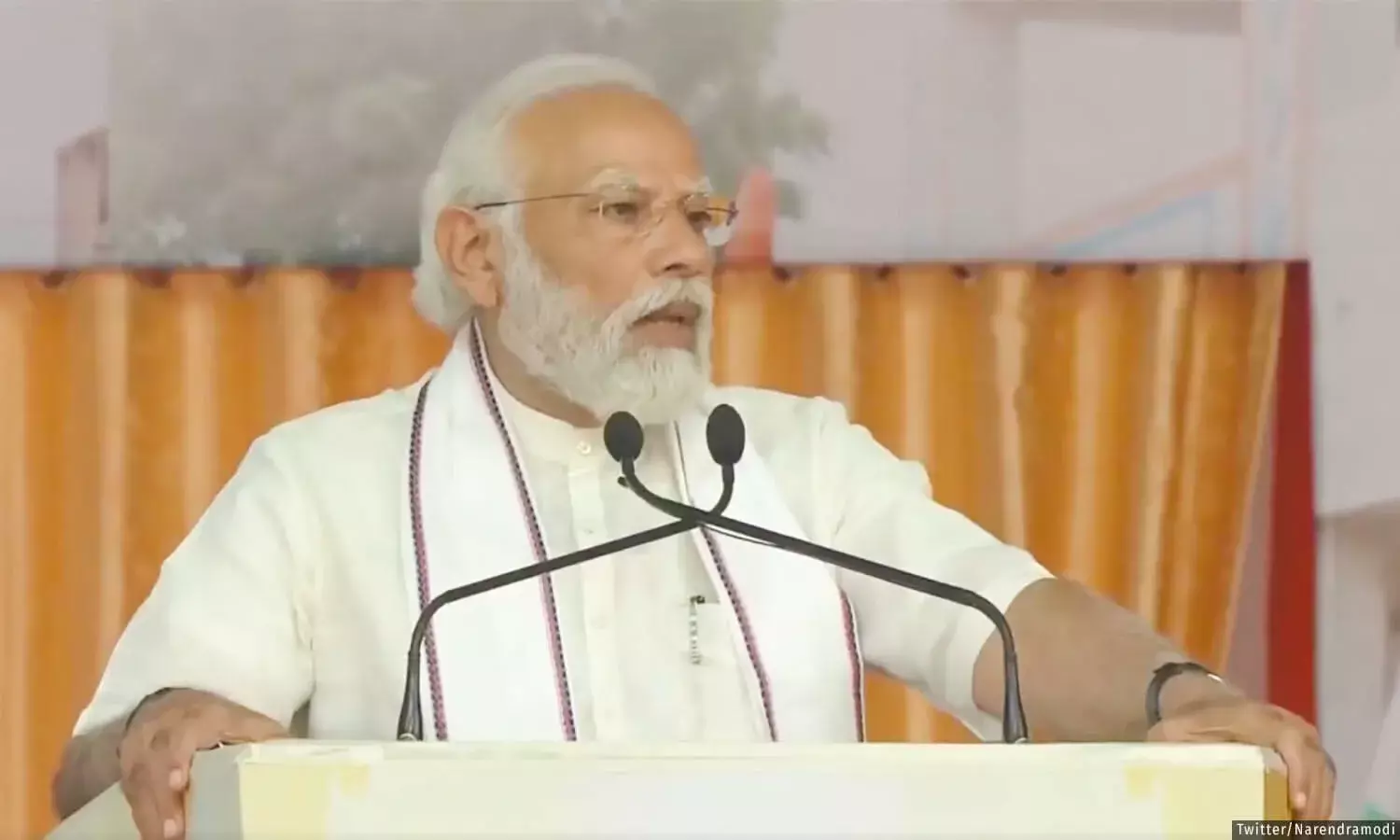PM Modi’s Claim That Dropout Rate In Gujarat Schools Is Less Than 3% Is Partially True
The upper-primary school dropout rate was 5% while the secondary school dropout rate was 17.9%, latest publicly available government data from the Union Ministry for 2021-22 show

Mumbai: In a speech to the Akhil Bhartiya Shiksha Sangh Adhiveshan in Gandhinagar, Gujarat on May 12, Prime Minister Narendra Modi said that the dropout rate in the state had gone from “around 40%” to “less than 3%”, quoting Chief Minister Bhupendrabhai Patel.
But this claim is only partially true, as different government sources give different drop-out rates, and the secondary and higher secondary school drop-out rates are more than 3%.
Gujarat’s Directorate of Primary Education has a dataset for dropout rates in primary (Grades I-V) and elementary (Grades I-VIII) school from 1990-91 to 2019-20. The latest data for 2019-20 gives the drop-out rate for primary school as 3.39%. A drop-out rate of 40% and higher was recorded in 1990-91 (49.02%), 1991-92 (48.17%), 1992-93 (45.97%) and in 1993-94 (44.63%).
The PM’s claim is close to these data points. During this period, the national dropout rate for primary schools fell from 42.6% in 1990-91 to 1.5% in 2019-20.
But school education statistics are also available from the Indian government’s Unified District Information System for Education Plus (UDISE+). The UDISE+ comes under the Ministry of Education's Department of School Education & Literacy and derives the dropout rate by calculating both government and private school students’ movement, according to a 2021 reply in the Lok Sabha, provided by the Minister of Education Dharmendra Pradhan. The government has been putting these statistics out under UDISE and then under UDISE+ since 2004-05.
According to this data, Gujarat’s primary-school level (Grades I to V) dropout rate was nil in 2021-22, but its upper-primary (Grades VI-VIII) dropout rate was about 5%, while the secondary school (Grades IX-X) dropout rate was 17.9%. A dropout rate of 5% means that for every 100 children, five dropout of school.
Between 2004 and 2022, the dropout rates across all three levels of education in Gujarat did not reach 40%, according to the UDISE and UDISE+ reports.
UDISE data is self-reported by schools and not many schools were covered prior to 2014-15, said Mridusmita Bordoloi of the Accountability Initiative at the Center for Policy Research, a Delhi-based public policy think tank. Now coverage has gone up to nearly 98-99%, and the dataset leaves out unrecognised schools that aren't covered by the education system, she said.
FactChecker also looked at a third source of data; the Statistics of School Education reports, which were released by the Bureau of Planning, Monitoring & Statistics under the Ministry of Human Resource Development. These reports have data available from 2006 to 2012. In these, however, levels of education are classified differently from the UDISE+ data, as primary (I-V), elementary (I-VIII) and secondary (I-X). As per this data, Gujarat’s dropout rate at the elementary level in 2009-10 was 39.7%. Then, in 2010-11, the number jumped to 46.7%, and stayed the same in 2011-12.
When asked about the discrepancy between the datasets from the state’s Directorate of Primary Education and Union ministry, Bordoloi of Accountability Initiative said there might be different methods of calculating the rate at the state and central levels. For instance, the state government might use a different cohort of grades, or a different age group.
Due to the lack of clarity in the Prime Minister’s speech as to which level of education he was referring to, and which data source was used, we reached out to his office via phone call (on May 26) and email (on May 31), and will update the story when we receive a response. We also reached out to Amit Malviya, the BJP’s IT and Social Media Head, over the phone (on May 26), but he declined to comment, and asked us to look at government reports for the data.
We welcome feedback. Please write to respond@indiaspend.org. We reserve the right to edit responses for language and grammar.


